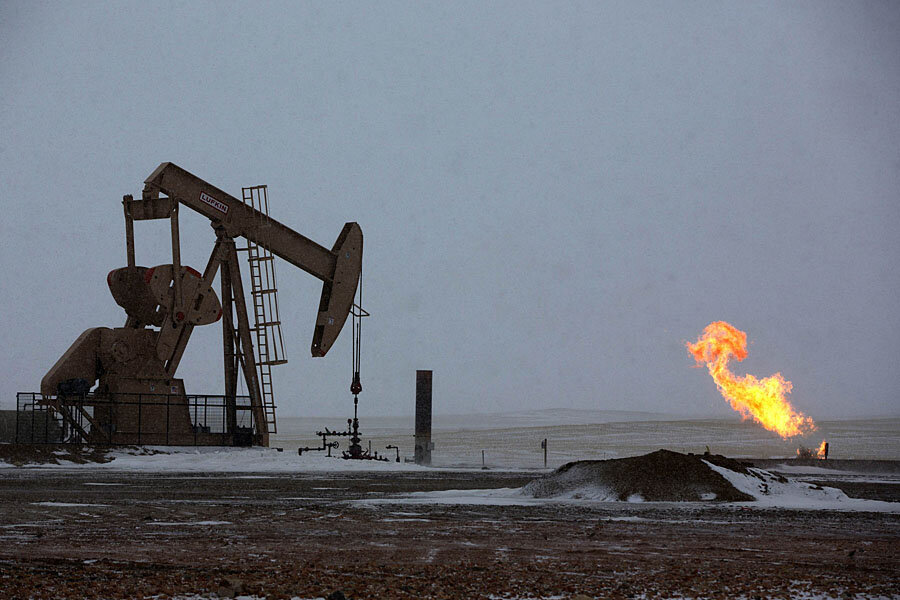North Dakota, Texas top US oil output, but other states are gaining steam
Loading...
The US has succeeded in lifting its oil production to over 8 million barrels per day, the highest levels in decades. But where exactly is all that oil coming from?
The answer for the last several years has been the Bakken field in North Dakota and the Eagle Ford in Texas. Those two regions are principally responsible for the surge in oil production.
But in April 2014, North Dakota surpassed the 1 million barrel per day mark – a milestone for a state that was producing fewer than 200,000 barrels per day just five years ago.
Texas has always loomed large in the US oil production picture. The Eagle Ford and Permian basins are the main sources of production growth, lifting the state’s oil output from just over 1 million barrels per day in 2009 to 2.9 million barrels per day in March 2014. The Lone Star state now accounts for more than one-third of America’s daily total production.
Texas and North Dakota get most of the attention, but Americans might be surprised by other major domestic sources of oil. (Related Article: What New Oil Export Laws Really Mean)
After Texas, the most oil comes out of federally-owned waters in the Gulf of Mexico. The 1.3 million bpd from the Gulf accounts for over 16 percent of US production. But despite the enormous output, we hear very little about the Gulf. Perhaps that’s because, aside from the occasional disaster (see: Deepwater Horizon), offshore drilling is largely out of the public eye. There is no haggling over land leases, truck traffic, noise, or other side-effects of land-based operations.
Taken together, Texas, North Dakota, and the Gulf of Mexico account for two-thirds of US oil production.
There are other surprising facts hidden in Energy Information Agency data, such as Alaska’s contribution to the country’s total level of oil production.
Alaska’s economy is largely dependent on oil, it has long been a main source of oil, and its elected officials are overwhelmingly supportive of the oil industry. The state government just passed a massive tax cut for the oil industry to encourage more drilling. It is therefore not unfair to say that Alaska displays qualities of a petro-state.
The data tells a different story: Alaska only produces 530,000 barrels per day, less than one-fifth of Texas’ daily output. That wasn’t always the case. Alaska produced over 2 million barrels per day back in the early 1990s, but its aging fields are in decline. Its image as an oil powerhouse is becoming increasingly detached from reality.
California’s role may also surprise some people. The West Coast haven for tree-huggers is the nation’s third largest oil producer, ahead of Alaska with 560,000 barrels per day. Like Alaska, California’s fields have also been in decline – back in the 1980’s, California churned out over 1 million barrels per day, double today’s rate.
(California thought it was on the verge of a new oil boom, but the recent 96 percent downgrade of the state’s recoverable oil reserves dashed those hopes.)
Looking forward, where will US oil come from? Barring an unexpected discovery, today’s leaders – Texas, North Dakota, and the Gulf of Mexico – will be tomorrow’s, too.
Source: http://oilprice.com/Energy/Crude-Oil/Black-Gold-U.S.-States-Where-Oil-Is-King.html







